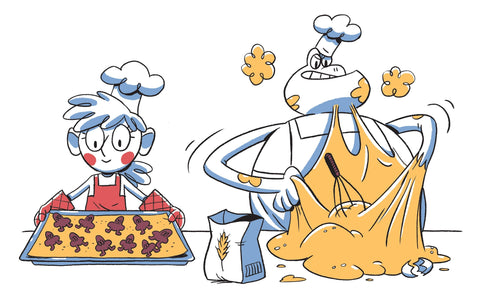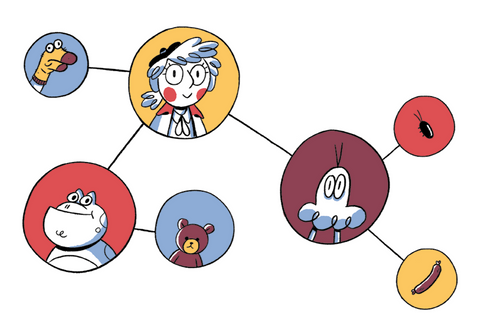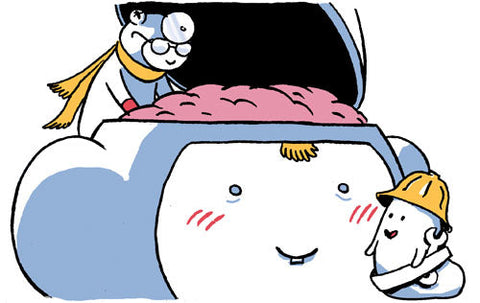We usually equate bureaucracy with reams of red tape, complex processes and altogether too much stuffiness.
Does it really have a place in leadership?
The answer, as ever, depends on context.
Read on to discover the pros and cons of bureaucratic leadership, when it works - and whether it’s right for you.
What is the bureaucratic leadership style?
The Cambridge Dictionary defines bureaucracy as “a system for controlling or managing a country, company, or organisation that is operated by a large number of officials employed to follow rules carefully.”
So, as you can imagine, the bureaucratic leadership style includes measures to ensure the system works like clockwork:
- A rigid hierarchy
- Absolute clarity of roles and responsibilities
- Efficient processes
Sounds kind of… strict, doesn’t it?
That’s a totally fair criticism, but it’s also the main selling point. Strict processes and procedures are often efficient. They can stifle creativity and innovation, but we’ll get to that.
Is bureaucratic leadership effective?
In the right workplace, bureaucratic leadership is a very effective tool. For example, in a manufacturing business, this style of leadership helps ensure safety, output, quality and consistency. Everyone knows their job. They know what to do, how and when to do it, and what is expected of them. And they know what to do when they find something they’re confused about, too.
Bureaucratic leadership is also helpful for employees who like to know precisely what success looks like and how they can achieve it. Some people thrive on certainty, predictability and routine; this type of leadership is a perfect fit for those employees.
It can also be great for customers (and suppliers) of an organisation as they get predictable results time and time again.
But what about that creativity and innovation we mentioned? Can a business really thrive if it just does the same thing on repeat?
Well… no. But a smart bureaucratic leader can build time and space for those things into the processes and procedures that keep things ticking along. In fact, provided there is a good level of psychological safety, having a set time and place to let people’s imaginations run free can be helpful!
Criticisms of this approach often focus on the old-school sound of the words hierarchy and chain of command. Those can be the nails in the coffin of a business, of course. Being slow to change is not a business benefit...
But with the right precautions in place; a regular review process, proper horizon scanning and time and money invested into innovation? This model of leadership does not need to be what holds the organisation back.
Is bureaucratic leadership right for me?
Bureaucratic leadership has a time and a place. It shines in rigid, practical and especially in dangerous working environments such as factories. In those places, you may not survive long using any other style of leadership!
But can it be applied successfully in other types of organisation?
Let’s explore an ad agency example.
A bureaucratic leader might set processes up for everything: lead generation, responding to queries, idea generation, design feedback, billing - you name it.
Does that sound tedious? Yes.
Does it sound like it would stifle creativity? Well… yes.
But it doesn’t have to. As with innovation, you can schedule opportunities for creativity. The point of bureaucratic leadership is to put measures in place that work. So if you have an ad campaign manager who does their best work at home, at 3am or surrounded by people who work in an unrelated industry… you can allow for that in those measures.
That said, you’re likely to encounter endless issues - clients and their projects won’t always fit into your idea of how a project should go. Creative people don’t always respond well to rigidity. You’ll find yourself slower to react to opportunities if you don’t streamline your policies and processes.
In reality, this is probably not the best way to lead a highly creative team with a varied workload and deep client relationships. But it’s not impossible - with a lot of care, you can apply this leadership style in a range of contexts.
So, if it sounds like your perfect leadership style - don’t give up on it just because you’re in a creative industry. But do give it some careful consideration, and be ready to show some (uncharacteristic) flexibility if the evidence suggests that you should try something a little outside of your comfort zone. In fact - check out situational leadership, it may just give you a few ideas!
How does bureaucratic leadership compare with other styles of leadership?
Take a look at How to lead: 11 leadership styles and frameworks to see how bureaucratic leadership compares to 10 other approaches.









